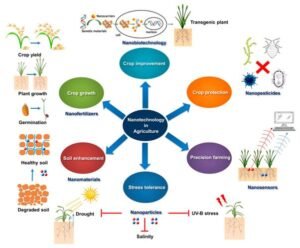Commercial and scientific cultivation of Ginger
Scientific name Zingibar officinale
Family – Zingiberaceae
Ginger is used in every region of India. Many medicinal properties are found in it. Many types of vitamins and minerals are found in Ginger who works as an immune booster in our body. It prevents our body from many diseases. Ginger has anti fungal, antibiotic, anti septic properties. Ginger contains Vitamin A, Vitamin C, and Vitamin B complex.
How to prepare Soilless seedling?
Many types of micronutrients such as calcium, magnesium, zinc, beta carotene are found in it which helps us to increase the immunity of many diseases. Ginger also has many other benefits
- Gives relief in upset stomach
- Ccontrols cough
- Controls diabetes
- Controls cholesterol
- Helpful in fighting cancer
- It is also helpful to keep our heart healthy

Ginger is cultivated in the world mainly in countries like India, China, Japan, Jamaica etc. But from the point of view of quality the Ginger grown in India and Jamaica is very good. Ginger is cultivated in almost all the states in India but still there is a lack of scientific knowledge of its production among the farmers. Due to which its cultivation on a large scale has not been possible even today.
Climatic requirement for Ginger: Hot and humid climate Light shady land is suitable for this. Light rain or a couple of irrigations after planting are necessary for germination. Continuous rainfall after germination and dry season at the time of crop preparation is beneficial.
Increasing role of Bio Fertilizer in agriculture.
Soil requirement for Ginger: Light loamy loamy soil with no water logging is suitable for Ginger.
Planting time for Ginger: Main crop June to July to take early harvest you can plant in may also.
Land Preparation for Ginger: For better germination and better yield we must do deep plough the field with the first rain. After plowing 5-6 times make the land friable by running the patela. At the time of last plowing give 20-25 tonnes of cow dung/ha and run the patela. In doing with drip system you can provide cow dung directly to the bed of the row planting of ginger so that you can save the manure.

Quality seed with quantity: Wee will require 15 to 18 quintals/ha of seed which include one piece weighing 20-30 grams and having four pods.
Sowing method for the Ginger: For normal or with drip farming we must divide the field into 1 meter wide distance of the high beds is 30 cm. depth 5 cm. Apply 25 quintal/ha urea, 3.75 quintal/ha single super phosphate, 175 quintal/ha muriate of potash, half dose of urea at the time of sowing and half dose twice in the standing crop after 2-3 months.
How to do integrated Farming System?
Seed treatment Ginger: Seed treatment is essential. Mancozeb 3 gm/Lit + Rogar/Metacin 1. In ml/Lit of water or Ridomil drug 02% solution, keep the seed for half an hour and dry it in shade. Line to queue 25 cms Plant to plant 20 cm. After sowing the seeds cover with light soil and cover the bed with a thick layer of dry weeds / straw to retain moisture and help them for germination.
Ginger varieties: Nadia, Jorhat, Pingpu, Suprama, Suruchi germinate 10-12 days after sowing which lasts for 2-3 weeks. After removing the weeds 3-4 times do the top dressing by giving urea. Harvest the center after eight to ten months when the crop is ready. After drying in the shade for 1-2 days were in the market. Yield 150 quintal/ha. Improved variety is 200 quintal.
Integrated Pest Management Strategies for Ginger
(a) Agricultural work
- We must do deep plowing of fields.
- Sunlight to the beds for 20-30 days is beneficial in controlling the multiplication of pests and diseases.
- Seeds can be selected for large, well-sized, stature, free from insect/animal infestation immediately after harvesting.
- Seed tubers in shallow beds with well soaked animal manure or with Trichoderma S. P. (10 grams of compost collected from Trichoderma) mixed with 20-25 cm between each other and one to the second shift can be placed at a distance. Balanced/recommended manure/fertilizer should be applied as per soil test report.
- It is mandatory to cover the Ginger bed with 10-12 tonnes of green leaves per hectare.
- Weeding after 40 and 90 days and immediately after application of fertilizer to prevent siltation of soil. 5 tons of green leaves per hectare conserves soil moisture inhibits weed growth and improves soil physical properties.
- A diluted dung slurry or liquid manure can be poured over the bed after each covering to increase microbial activity and nutrient availability.
- Weeding is required just before fertilizer application and cover. Two to three weedings are necessary depending on the intensity of weed growth.
- It is necessary to apply Neem-Khalli to the soil 15 days before sowing at the rate of 2 tonnes per hectare. Adequate arrangement of drains should be made between each bed to remove the accumulated water and also to reduce soil diseases.

Papaya farming methods for beginners.
(b) Mechanical Work in Ginger Farm:
- While preparing the land strong sunlight on the beds is beneficial in controlling pests and diseases due to biological action.
- Light red color will be useful for attracting and collecting the adult moths of seedling borers.
- Provide proper drainage system to avoid water logging to control mild rot or rotting of tubers.
- If mild stature is seen the affected section should be carefully removed along with the surrounding soil as it is a soil borne disease to reduce the spread.
- If the infestation is not widespread it is recommended to identify the folded leaves and collect the leaf-turning larvae.
- Use of healthy tubers for planting and removal of dead plants and affected tubers before hand reduces the infestation of center flies.
(c) Biological control for Ginger:
- Trichoderma can be applied at the time of planting to avoid mild rot/tuber tolerance.
- Preserve natural biological agents like female bird antelope, spider cusopid trichogrammatidus etc.

(d) Chemical Control for Ginger:
If a seedling borer is seen, then spraying of neem oil (0.5%) for fifteen days. Do or sprinkle dimethoate or quinalphos (0.05%) at intervals. Restricted use of Bordeaux mixture (1%) for topical application in disease prone area may be used to control mild rot/stature rot. Spray carbaryl (0.1%) to control leaf fold insects.
Tissue Culture Plant Business In India.
To get rid of scaly pest of the tuber for storage/planting, dip the seed tuber twice in Vivanalphos (0.1%). Spraying of dimethoate and quinalphos is effective against tuber fly. For tuber rot management, treat the height with Metalaxyl MZ at the rate of 4 g/kg and soil well with Metalaxyl MZ.

Note: You must use chemical just after the confirmation of KVK/institution scientist. Impact of different pest has different solution.
Harvesting & Yield: Ginger is approx six month crop. After getting complete maturity you can harvest up to 200 quintal / ha.
How can you enhance the Value of Ginger:
Moringa cultivation project for the beginners.
If you follow some food processing method to procure Ginger then you can earn good benefits from this. After getting few commercial steps like Washing, peeling, slicing, dehydrating as well as pulverizing. After getting dehydrated ginger powder you can sale with your own brand into your local market. By doing this you can gain more profit with Ginger. After covid 19 period there is huge demand of Ginger in market in the form of immune booster kadha.




